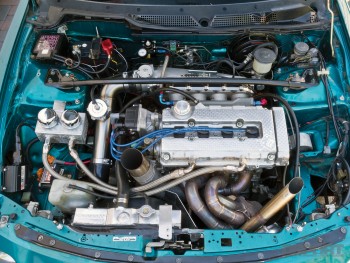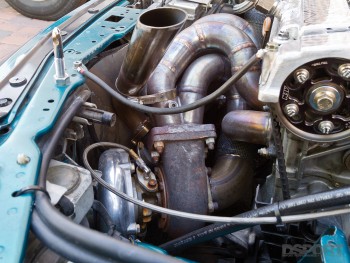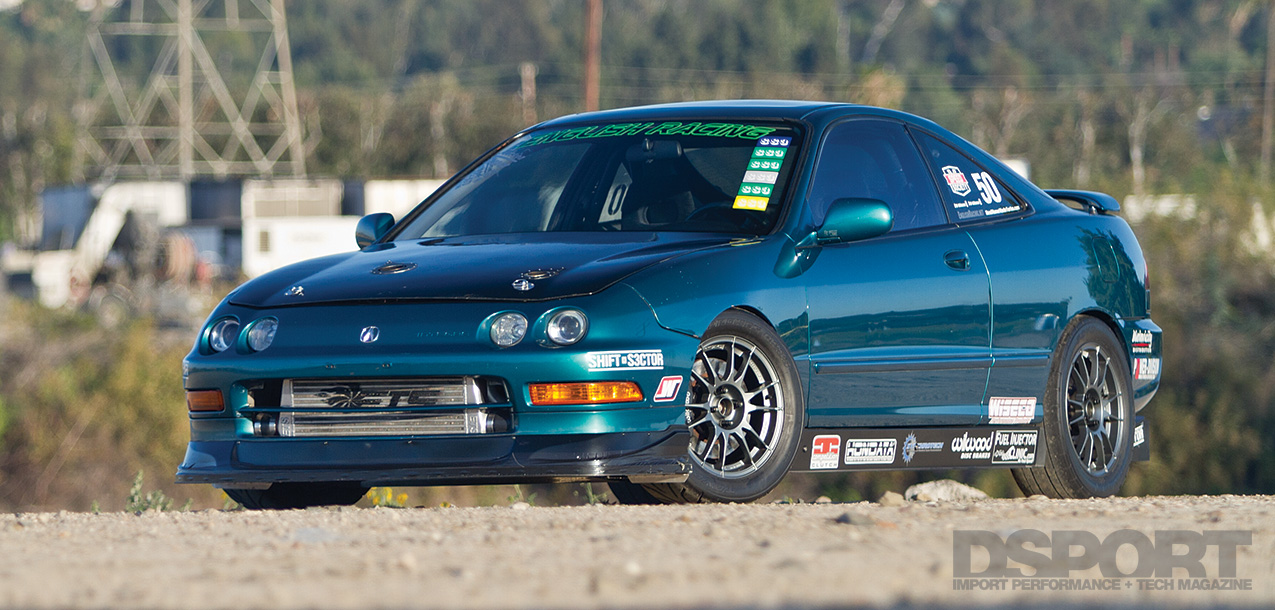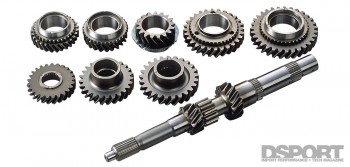NOT THE TIME FOR TAKE OFF
 The 40-something mother who sold Kerr the GS-R probably wouldn’t recognize it today. A custom English Racing lip spoiler and splitter work with Kiwi Specialties’ side skirts to prevent airflow from making its way underneath the chassis. As speed increases, the chassis becomes more susceptible to taking flight or, at the very least, losing a lot of traction. Lips and splitters positioned at the front break up and restrict air that would otherwise flow underneath the chassis and create lift. Instead, these components force high-pressure air along the top and sides of the vehicle, increasing downforce. Strategically designed side skirts perform a similar function; the closer all of this is to the ground, the better it works. These are important factors to consider, especially when planning to go 50-plus mph faster than Honda’s engineers ever imagined this Integra would go.
The 40-something mother who sold Kerr the GS-R probably wouldn’t recognize it today. A custom English Racing lip spoiler and splitter work with Kiwi Specialties’ side skirts to prevent airflow from making its way underneath the chassis. As speed increases, the chassis becomes more susceptible to taking flight or, at the very least, losing a lot of traction. Lips and splitters positioned at the front break up and restrict air that would otherwise flow underneath the chassis and create lift. Instead, these components force high-pressure air along the top and sides of the vehicle, increasing downforce. Strategically designed side skirts perform a similar function; the closer all of this is to the ground, the better it works. These are important factors to consider, especially when planning to go 50-plus mph faster than Honda’s engineers ever imagined this Integra would go.
STARVATION IS DEATH
 At one of the Shift S3ctor Airstrip Attack events in 2013, Kerr brought the Integra to race on the airstrip in Coalinga, California. With the aerodynamics set up, he was ready to take a swing at his goal. But this venture fell short of his goal, as he only had enough power to reach 173 mph. To add to his shortcomings, Kerr noticed a 50-psi drop in oil pressure the moment he began braking, which in turn resulted in oil starvation and spun bearings. A new mill would be in order.
At one of the Shift S3ctor Airstrip Attack events in 2013, Kerr brought the Integra to race on the airstrip in Coalinga, California. With the aerodynamics set up, he was ready to take a swing at his goal. But this venture fell short of his goal, as he only had enough power to reach 173 mph. To add to his shortcomings, Kerr noticed a 50-psi drop in oil pressure the moment he began braking, which in turn resulted in oil starvation and spun bearings. A new mill would be in order.



